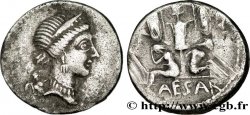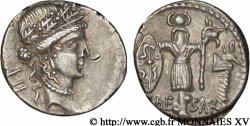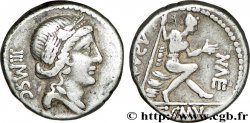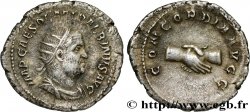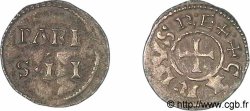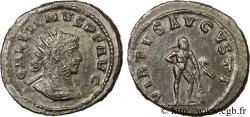- Accueil
- >
- >
v41_0436 - IULIUS CAESAR Denier
MONNAIES 41 (2009)
Startpreis : 450.00 €
Schätzung : 850.00 €
Erzielter Preis : 450.00 €
Anzahl der Gebote : 1
Höchstgebot : 715.00 €
Startpreis : 450.00 €
Schätzung : 850.00 €
Erzielter Preis : 450.00 €
Anzahl der Gebote : 1
Höchstgebot : 715.00 €
Type : Denier
Datum: 49 AC.
Name der Münzstätte / Stadt : Gaule ou Italie
Metall : Silber
Der Feingehalt beträgt : 950 ‰
Durchmesser : 17,5 mm
Stempelstellung : 11 h.
Gewicht : 3,80 g.
Seltenheitsgrad : R1
Kommentare zum Erhaltungszustand:
Exemplaire sur un petit flan épais, bien centré des deux côtés. Droit parfait avec un éléphant légèrement stylisé. Revers bien venu à la frappe, de haut relief avec une faiblesse de frappe sur le simpulum. Magnifique patine de médaillier avec des reflets mordorés et bleutés irisés. Conserve une partie de son brillant de frappe et de son coupant d’origine
N° im Nachschlagewerk :
Pedigree :
Cet exemplaire provient de la collection M. R. de Dijon
Vorderseite
Titulatur der Vorderseite CAESAR À L'EXERGUE.
Beschreibung Vorderseite Éléphant passant à droite ; à ses pieds, un serpent (ou carnyx, trompette gauloise).
Übersetzung der Vorderseite “Cæsar”, (César).
Rückseite
Titulatur der Rückseite ANÉPIGRAPHE.
Beschreibung Rückseite Instruments pontificaux : simpulum, aspersoir, hache à sacrifice, chapeau à sacrifice.
Kommentare
Pour ce type, M. Crawford a relevé une estimation de 750 coins de droit et de 833 coins de revers, représentant une production qui pourrait avoisiner les deux à quatre millions de deniers. Pendant très longtemps, on pensa que ce denier avait été frappé par César pendant la Guerre des Gaules entre 58 et 52 avant J.-C., en Gaule même. En fait, il fut fabriqué au début des Guerres Civiles. Il a été imité servilement par les Trévires avec le bronze HIRTIVS (LT. 9235), fortement romanisé. L’exemplaire de MONNAIES 34, n° 402 en FDC s’est vendu 855€ avec un offre maximum à 1.023€ et huit offres.
For this type, Mr. Crawford noted an estimate of 750 obverse dies and 833 reverse dies, representing a production that could be around two to four million denarii. For a very long time, it was thought that this denarius had been struck by Caesar during the Gallic Wars between 58 and 52 BC, in Gaul itself. In fact, it was made at the beginning of the Civil Wars. It was slavishly imitated by the Treveri with the bronze HIRTIVS (LT. 9235), heavily Romanized. The example of MONNAIES 34, No. 402 in FDC sold for €855 with a maximum bid of €1,023 and eight bids
For this type, Mr. Crawford noted an estimate of 750 obverse dies and 833 reverse dies, representing a production that could be around two to four million denarii. For a very long time, it was thought that this denarius had been struck by Caesar during the Gallic Wars between 58 and 52 BC, in Gaul itself. In fact, it was made at the beginning of the Civil Wars. It was slavishly imitated by the Treveri with the bronze HIRTIVS (LT. 9235), heavily Romanized. The example of MONNAIES 34, No. 402 in FDC sold for €855 with a maximum bid of €1,023 and eight bids








 Berichten über einen Fehler
Berichten über einen Fehler Die Seite drucken
Die Seite drucken Teilen meiner Auswahl
Teilen meiner Auswahl Stellen Sie eine Frage
Stellen Sie eine Frage Einlieferung/Verkauf
Einlieferung/Verkauf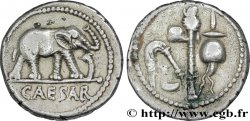
 Details
Details